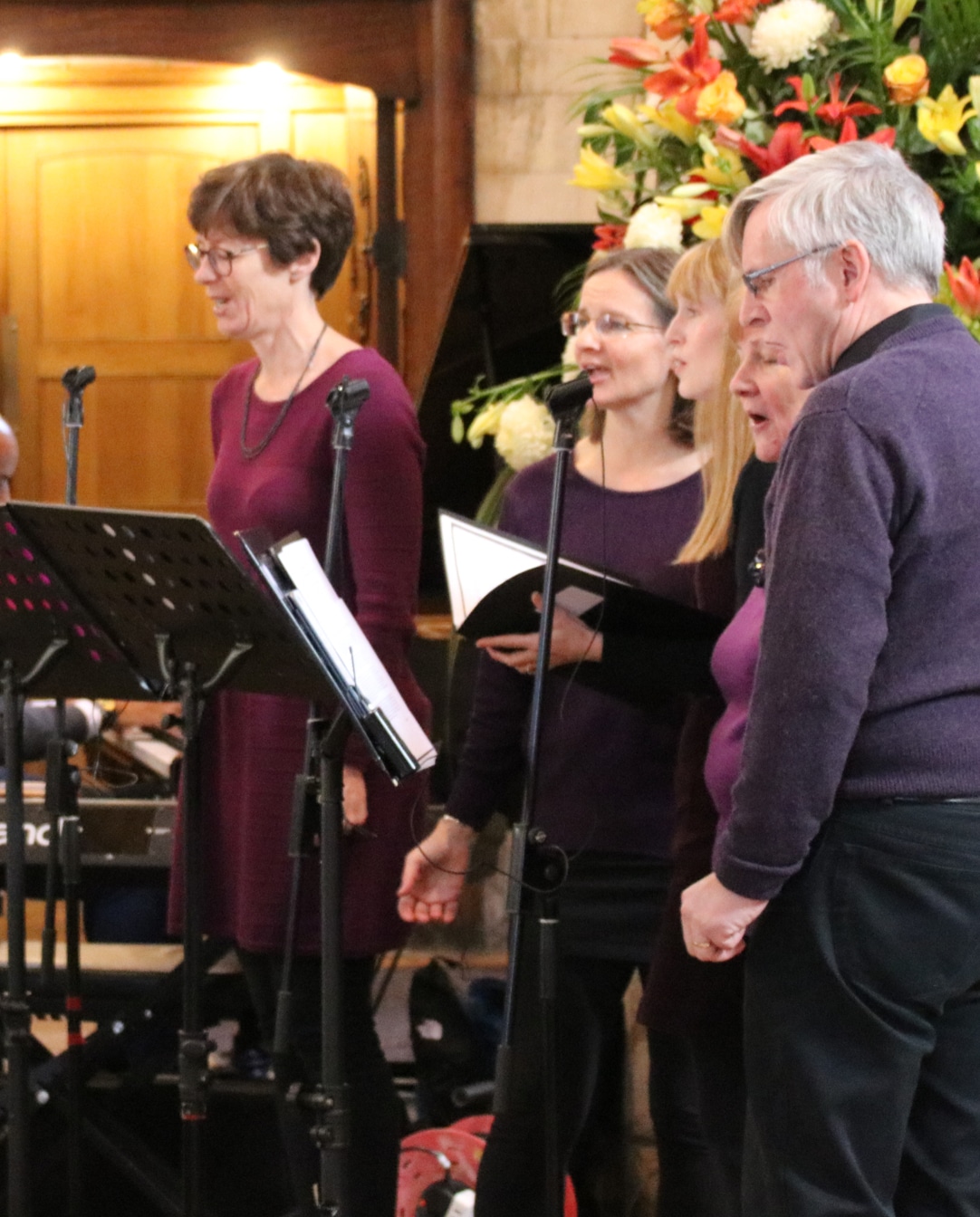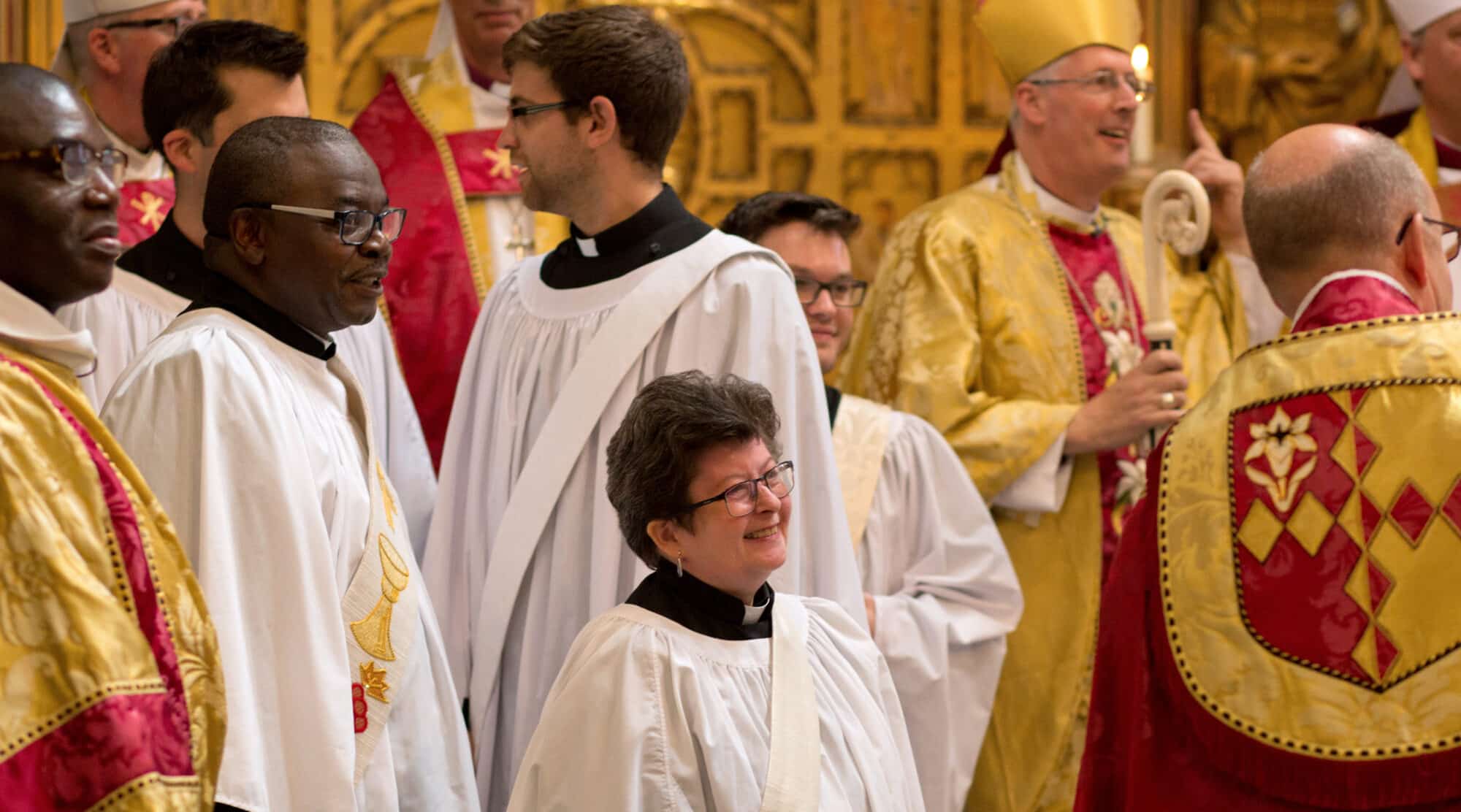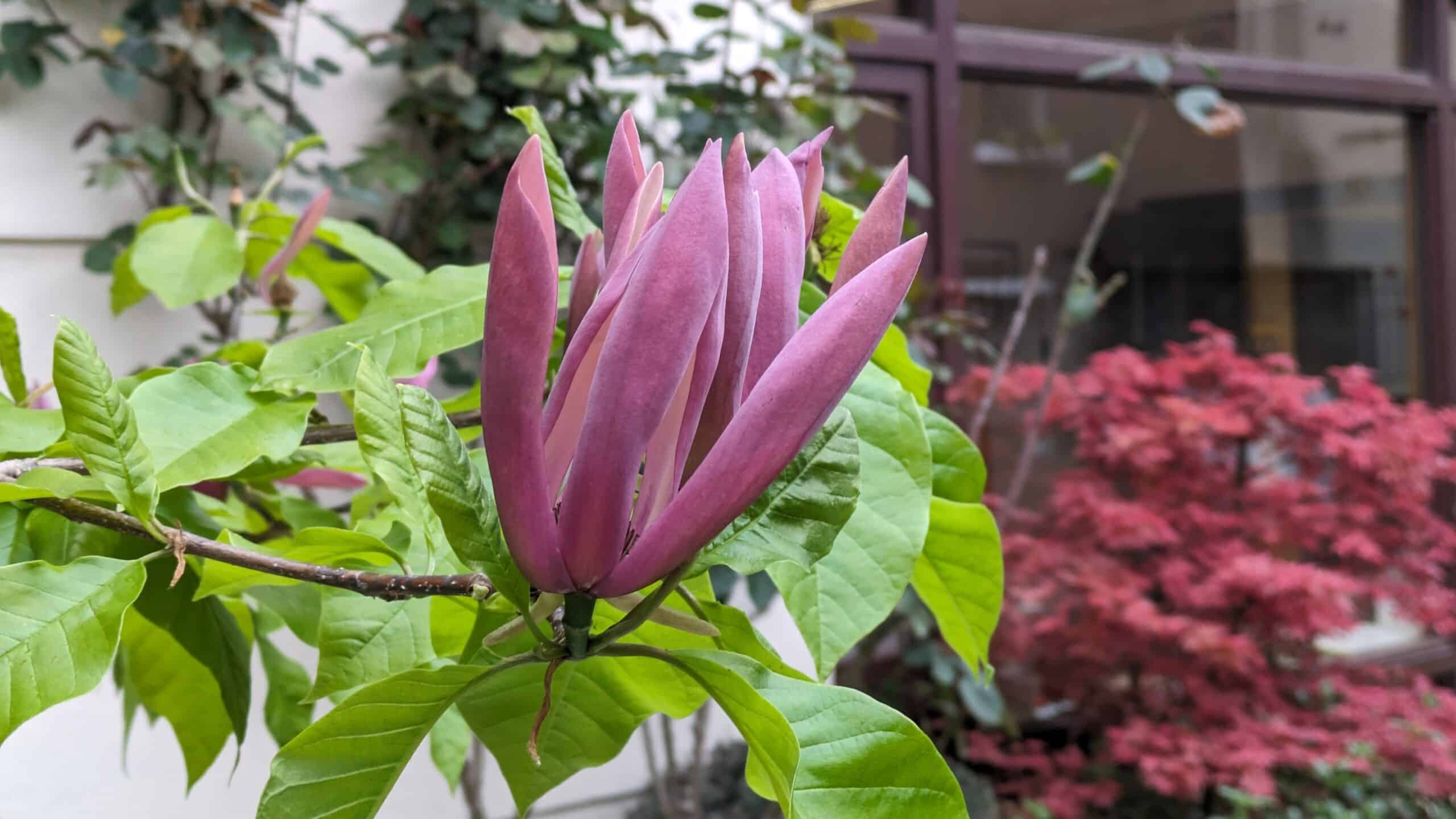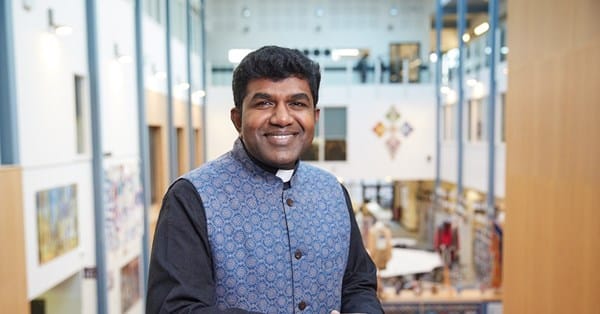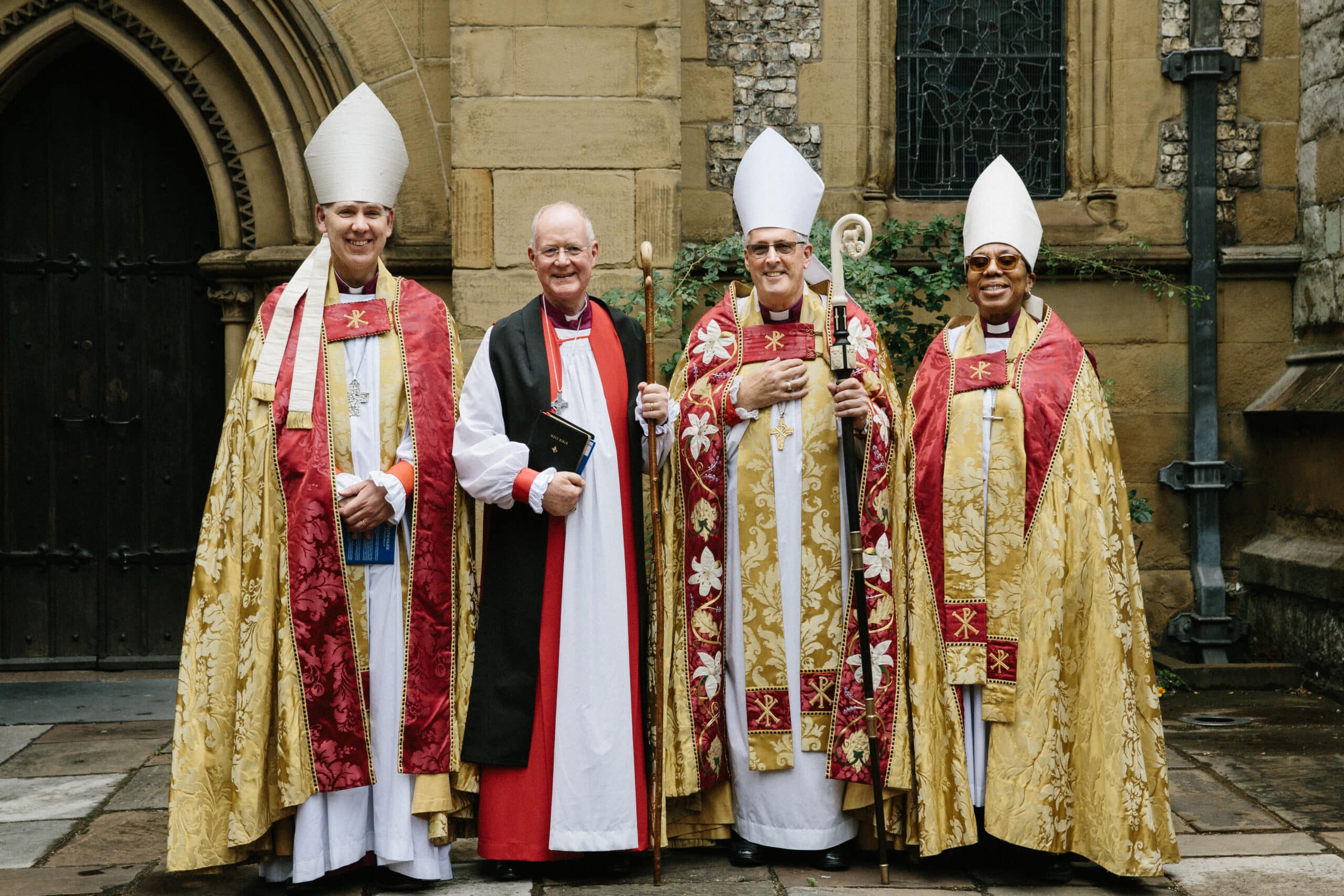“I begin with an idea and it becomes something else.” Picasso
As the new Team Vicar of St Mary’s Eco Church, realizing that it felt like everyone who was passionate about the environment in Southwark was on the important pilgrimage to Glasgow for COP26, I unexpectedly chose to stay here, with those left behind. With the words of Lamentations and the Psalms ringing in my ears, I went about creating a space for lament here by the river. A space for lament, but also a space for hope – alert to that astonishing clarion call of hope that we hear in Isaiah 40-66 to counter Lamentations – and the call as followers of Jesus to be bearers of Good News even in the bleakest of situations.
That was how our COP26 pop-up at St George the Martyr, a space for Lament and Hope, began (thank you to everyone at that wonderful church, especially Jonathan Sedgewick!). But our idea was soon to become something else.
The week started – after a flurry of activity – with our nets of lament hanging from the altar rails, laden with rubbish from the local area, and our river of hope flowing from the altar down into the centre of the church. Planet Earth was streaming onto a large screen and morning birdsong came from the speakers, transforming the feel of the place. Eco-artwork by children and adults (thank you especially to Trinity St Mary’s Primary School Balham and the Loving Earth Project) hung from the balconies and walls and creative prayer stations filled the building. But the place hadn’t become alive yet and no-one was coming in.
That only started when we went out. First, Tom (pastoral assistant on loan from St John the Divine Kennington) moved outside to finish the intricate COP26 globe on our chalk boards, modelling creativity on the steps. We noticed that whenever he was out there – or I went out to see how he was getting on – people came back in with us to explore the rest of the pop-up. So we went with it. Next Jenny (from South Bank Churches) went further and set up one of our creative prayer stations on the street, which led to some wonderful conversations and encounters.
But, in the end, it was the nature sculptures that drew people in. Made by adults and children from natural debris – seed heads, acorns, tree seeds, autumnal leaves – things that we would normally tread on in the street or watch swept away like rubbish, these fragile nature sculptures and the important message they held spoke to people (and a particularly persistent pigeon). We had started making them at Southwark Cathedral as part of the Vigil for COP26, to pray for reimagination in the face of climate change. Then painstakingly carried them to St George the Martyr with the help of a scratch team of tourists. To begin with, we created a trail with them through the building. But when relatively few people were coming in, we decided to move them outside, onto the imposing steps of St George the Martyr.
Rev Dr Sharon Moughtin, Team Vicar at @stmaryseco, is running a workshop with @StAndrewsSW9 pupils as part of @stmaryseco #COP26 pop-up at @georgethemartyr. Teacher Miss Plumridge said “We have been doing a lot on Climate Change” #EcoSouthwark pic.twitter.com/GrRgTdKQ2C
— Southwark Diocese (@SouthwarkCofE) November 2, 2021
And they multiplied, transforming the steps from an daunting barrier to a place of interest and welcome. Passers-by who hadn’t even noticed our posters in the business of Borough stopped to look at the little sculptures – which earth had given and human hands had made – as they grew into the hundreds, some of them strikingly beautiful.
Passers-by would look at us intrigued, waiting for an explanation. The message the sculptures carried was simple. ‘We’re here for COP26 and climate change. We’re making these – all of us – because we’re made in the image of God the Creator and right now – in the face of climate change – we need to be creative. We need to learn how to reimagine our lives, and we need our leaders at COP26 to have the courage and creativity and imagination to do the same.’ (Lots of nods at this point) ‘So we’re making the sculptures and we’re praying for creativity in ourselves and our leaders. Would you like to have a go?’
These little sculptures drew people in, to the point that (for Covid safety reasons) we had to take that first prayer station out onto the streets (like Jenny), as there were too many people in the building. Children engaged, of course. But also young adults who loved the opportunity to get creative with Instagrammable moments, and older adults (‘I feel like a 7 year old again! This is wonderful!). They also opened up meaningful conversations and hopes for future collaborations with professionals – osteopaths, artists, art therapists, journalists, photographers, musicians. Possibly my favourite were the fleeting conversations with motorbikers, cyclists, and bus passengers waiting at the red light, some of whom then couldn’t resist coming on Saturday morning: ‘I’ve been dying to come and find out more all week! What are these?! Can I buy one?’ ‘No. But you can make one. And come and see. There’s more…’
One pause for thought: it was mostly those that are my age – between late 30s and late 50s – that didn’t engage in making a sculpture themselves, or take part actively in the other creative prayer stations. These adults enjoyed watching others engage, they looked at the different prayer stations and said they thought they were a good idea. They took photos. Some said they’d like to bring other people to engage, and did. But, on the whole, that age group couldn’t quite pick up courage to have a go themselves. Were they too busy? Were they at that stage of life where they’re so used to having to produce useful things that to create something with no clear aim felt too irrelevant? Some who were there accompanying children would respond to: ‘And we can’t leave responding to the challenge of climate change to children – we all need to learn how to reimagine our lives’ and then have a go themselves. But this was definitely a group that found it harder to be creative than others – at least in public. Food for thought.
We begin with an idea and it becomes something else. On the run up to COP26 I had been aware of the need for creativity and so shaped the week around the arts and invited in professionals to lead and inspire us. Multiple musicians came on Monday to play their laments and visions of hope – including Hildegaard de Bingen and bell ringers to ring the changes for COP26. But, on the other days, the professionals weren’t inspired to come. What actually took place was better.
Instead, there was a groundswell of creativity among all of us. It felt like the ‘top down’ week that I had envisaged had been turned topsy turvy by the Spirit as the week was reimagined. Even the Monday musicians broke the mould, turning up on days well beyond Monday, asking to play their laments and hopes then, which was wonderful. The prayers from the front of the church, on the hour, that I had imagined were forgotten as it became immediately apparent that this would interrupt the intimate quiet prayer lives that were taking place at the multiple prayer stations in the building: not just at the reimagination prayer station, which had drew people in, but the many other stations in the building that this led to, including the nets of lament and river of hope. It became very clear that my role was simply to create a space and then let it go and watch the Holy Spirit at work.
There are so many stories from our week of pop-up for COP26. For a start we led multiple interactive workshops with schools from the Diocese, which we’re hoping to continue. The Reimagination prayer station was just the first of our ‘4 Rs’. (As Christians we don’t just have the 3 Rs that tell us what to do – reduce, reuse, recycle – we also have our 4 Rs that tell us why we do this based on four of God’s actions in Genesis 2 – Reimagination, Relationship, Respect, Responsibility). But that is for another time and place, when the 4 Rs resources will be made freely accessible on our website: www.stmarysecochurch.org.
There are also, of course, the stories of the other volunteers in our scratch team without whom this week simply couldn’t have happened: Tom, Jenny, Berni, Hannah, Steve, Angus, Ursula, Suzette, Bethie, Jo, Josephine, Patricia, Tony, Doris, Jonathan.
But for me personally, it was the groundswell of creativity that I will remember, as passers-by found a way to contribute their distinctive contributions as equals, where children and adults found a way to pray with their own words and symbols, where almost everyone understood that their contribution matters. What I will take away with me is the way in which the week took on a life of its own – upending my own plans and imagination – with the spark of the Spirit.
The second R: Relationship. God blew into the nostrils. All humans share God’s breath. Each link of this chain bears the name of a different country people chose to pray for.
The third R: Respect. God planted a garden. We show respect for those other creatures that have been better at taking care of natural places than humans. Here we make birdfeeders, giving thanks and praying for wildlife.
The fourth R: Responsibility. God gives the human responsibility for the garden. We have failed in this responsibility. Here we have the chance to contribute to the nets of lament and then draw or write and be part of a vision of hope for the planet.
(L-R: The second R: Relationship. God blew into the nostrils. All humans share God’s breath. Each link of this chain bears the name of a different country people chose to pray for;
the third R: Respect. God planted a garden. We show respect for those other creatures that have been better at taking care of natural places than humans. Here we make birdfeeders, giving thanks and praying for wildlife.
The fourth R: Responsibility. God gives the human responsibility for the garden. We have failed in this responsibility. Here we have the chance to contribute to the nets of lament and then draw or write and be part of a vision of hope for the planet.)
COP26 is over and the work of the people really begins – one of the reasons I am glad to be licensed in my new role as Team Vicar of St Mary’s Eco Church this side of COP26. It’s time for us to be those who call out creativity and hope in others: creating spaces for lament, but also spaces for hope and agency, particularly for those who lack it. And this includes all creation, whose strong voice and sense of visibility and agency in the Bible is so often drowned out and erased in society today. As a closing thought: in response to our school workshops, one child suggested a fifth R (it looks like these are also ready to multiply!): ‘what about Rejoice?’. Amen. So our next project as St Mary’s Eco Church: in response to the challenge of Isaiah 55 and the call of Jesus: what can we be doing, in our place, to bring Good News, so that creation can rejoice, so the trees of Lambeth will clap, will clap their hands?
Want to find out more about ways you and your church can engage with environmental issues? Visit southwark.anglican.org/environment.
